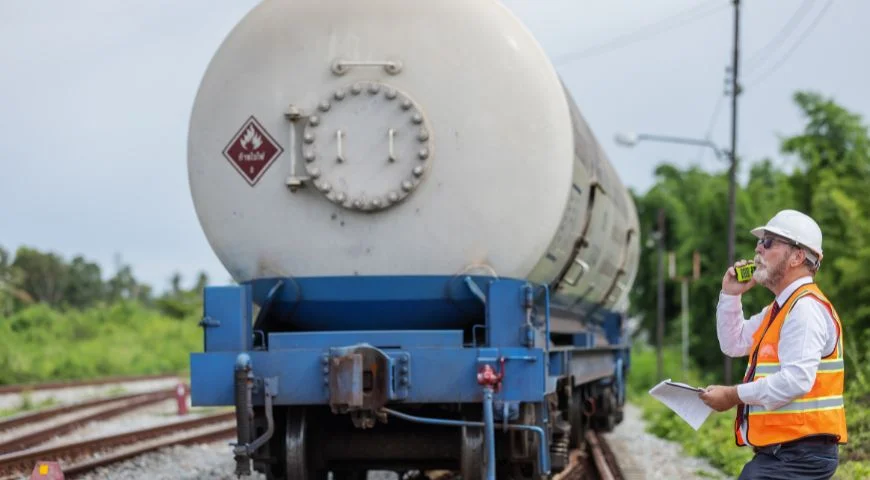
ISO Tank Containers vs Flexi Tanks vs Drums: Which Is Right for Your Cargo?
In the case of shipping liquids, chemicals, or other special cargo across the border be it by sea freight forwarding services or air freight logistics, the selection of the appropriate packaging solution is paramount. All modes, such as ISO tank containers, flexi tanks, and drums, have their own advantages that are based on the characteristics of cargo and logistic requirements. To India-based and USA-based companies, the differences can be a matter of difference between a hustle free transit and an expensive hold up. This guide is the exploration of these three possibilities, which would help you to choose the one that suits your cargo.
1. Understanding the Key Features & Use Cases
ISO Tank Containers: Flexibility for Large-Scale Shipping
The ISO tank containers are tough, reusable tanks which are constructed to international standards and are used in bulk liquids such as hazardous chemicals, oils and food grade liquids. They can be used in global ocean freight forwarding services and port agency services because of their standard design. When large quantities of tank containers are required to be effectively transported they are suited to depots of tank containers in India or tank containers in Mumbai and Mundra.
Flexi Tanks: Versatility for Smaller or Non-Hazardous Liquids
Flexi tanks are tough, flexible bags consisting of high-strength plastic that are frequently used within the common shipping containers. They are more suitable in lesser amounts or in non-hazardous liquids and give flexibility in loading since they can be adjusted to any sizes of a container including iso container tanks. Flexi tanks are more ideal in the cases of liquids that have chemical or food grade and need no extreme containment standards.
Drums and Smaller Containers: Cost-Effective for Low-Volume & Specialty Cargo
There is the traditional selection of drums; typically metal or plastic, used when small quantities are involved, hazardous products and even perishable goods are to be shipped and specialty chemicals are to be shipped. They are commonly applied in inland transportation or sampling, or where the hazardous cargo standards have to be followed by regulation.
2. Cost, Efficiency, & Safety Considerations
Cost and Scale Efficiency
Massive, intensive shipments, e.g. nhava sheva in ISO tank or Hazira in tank container, prefer the use of ISO tank because of its re-usability and lower unit price of bulk liquids. They also ease supply chain management of the ISO tanks, whereby there are several shipments.
Conversely, flexi tanks are cheap in terms of initial investment on small and flexible deliveries, hence affordable to undertake short-term projects or other liquids, which are perishable. Low volume or highly specialized cargo are brought out on drums, particularly where there is a concern with regulatory documentation of hazardous goods.
Safety and Compliance
All the options are safe, however, the ISO tanks are designed to be very safe particularly when dealing with dangerous chemicals. They are commonly used in ocean forwarding of freights that have hazardous products as they are inexpensive, durable and meet the international safety standards.
However, flexi tanks need to be handled and cleaned well upon changing the liquid particularly when dealing with hazardous liquids. Simple, drums are frequently the easiest to comply with–they can take the hazardous or small but they do not have the bulk efficiency of tanks.
3. Operational Flexibility & Logistics Network Fit
Port and Warehouse Compatibility
In the case of iso tank Mumbai, Mundra and Nhava Sheva ports, the tank container depots in India are essential in the storage, maintenance, and transportation of ISO tanks. These depots provide ISO tank depot services and supply chain management to ISO tanks, which allows freight forwarders and logistics providers to deal with comfortably.
Flexi tanks are also beneficial when it is required to have flexibility in space and rapid loading/unloading- this is especially applicable to the export of liquid that has changing demand.
Freight Mode and Destination
Whereas sea freight services normally apply in large, bulk, and non-urgent deliveries, air freight services are favored when the shipments are urgent, high-value cargo, and must be delivered within a short period of time. Flexible tanks are usually useful in the air cargo forwarding solutions where there is need to deliver in a fast and efficient manner.
Finally, the selection of the appropriate tank or container is determined by the volume, the nature and delivery schedules of your cargo.
Conclusion: Making the Right Choice
The choice among the ISO tank containers, flexi tanks and drums is based on the size of cargo, safety and cost; as well as your operational requirements. The ISO tanks are best suited to large volume bulk liquid with sustainability and compliance as a priority, whereas flexi tanks or drums may be more appropriate to the flexible or small volume liquids.
Collaborate with reputable logistical service providers such as FAK Worldwide who will be able to assist you with the following services: forwarding services in sea freight, air freight, and port agency– so that your cargo arrives safely, on time, and at a reasonable cost.
Stay Connected with FAK Worldwide
You can follow us on Instagram, LinkedIn, and Facebook to be updated with the latest news in the industry, innovative solutions, and receive the guidance of an expert on logistics. Do you have a trusted environment when it comes to intelligent, safer freight.



